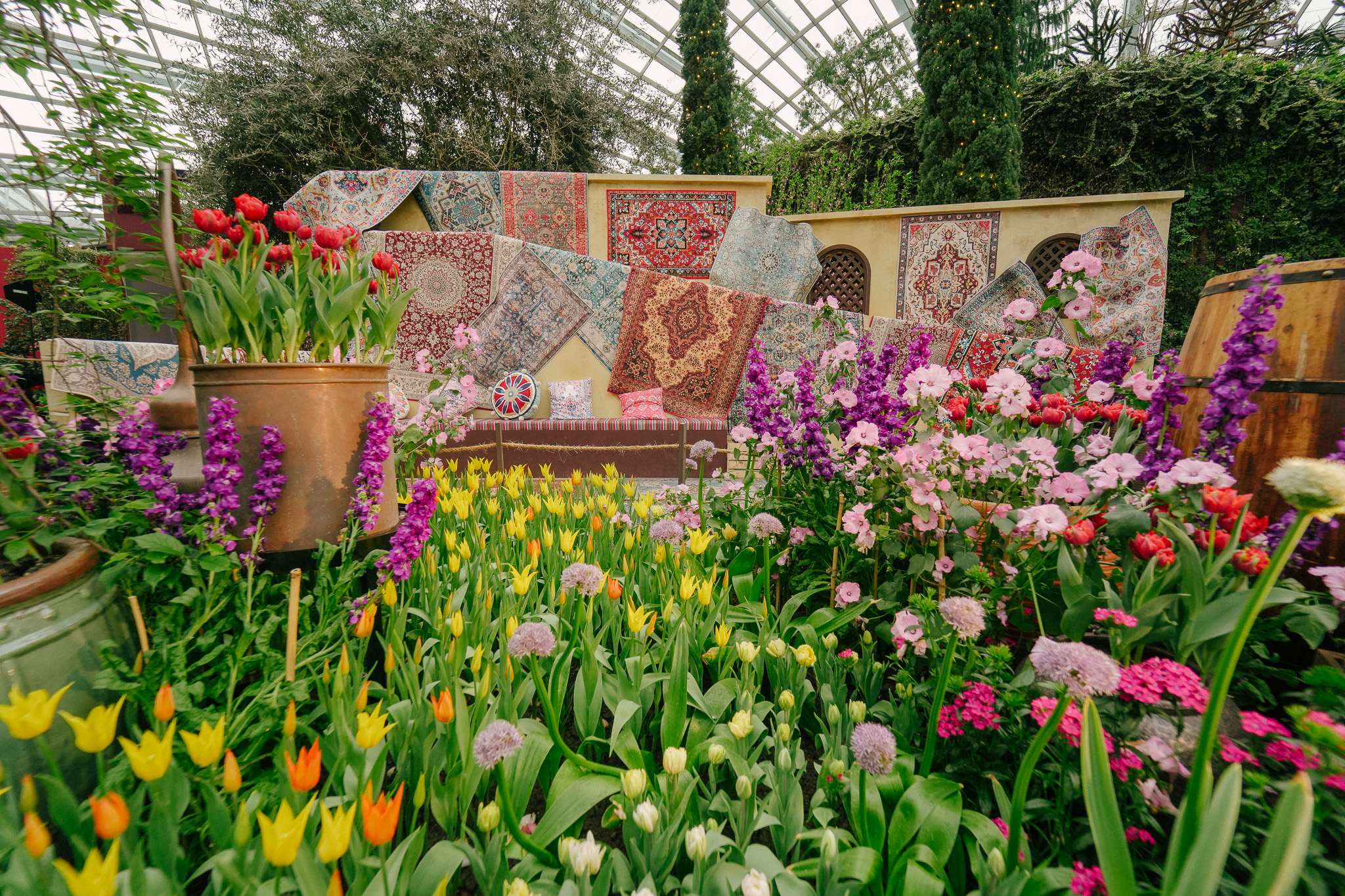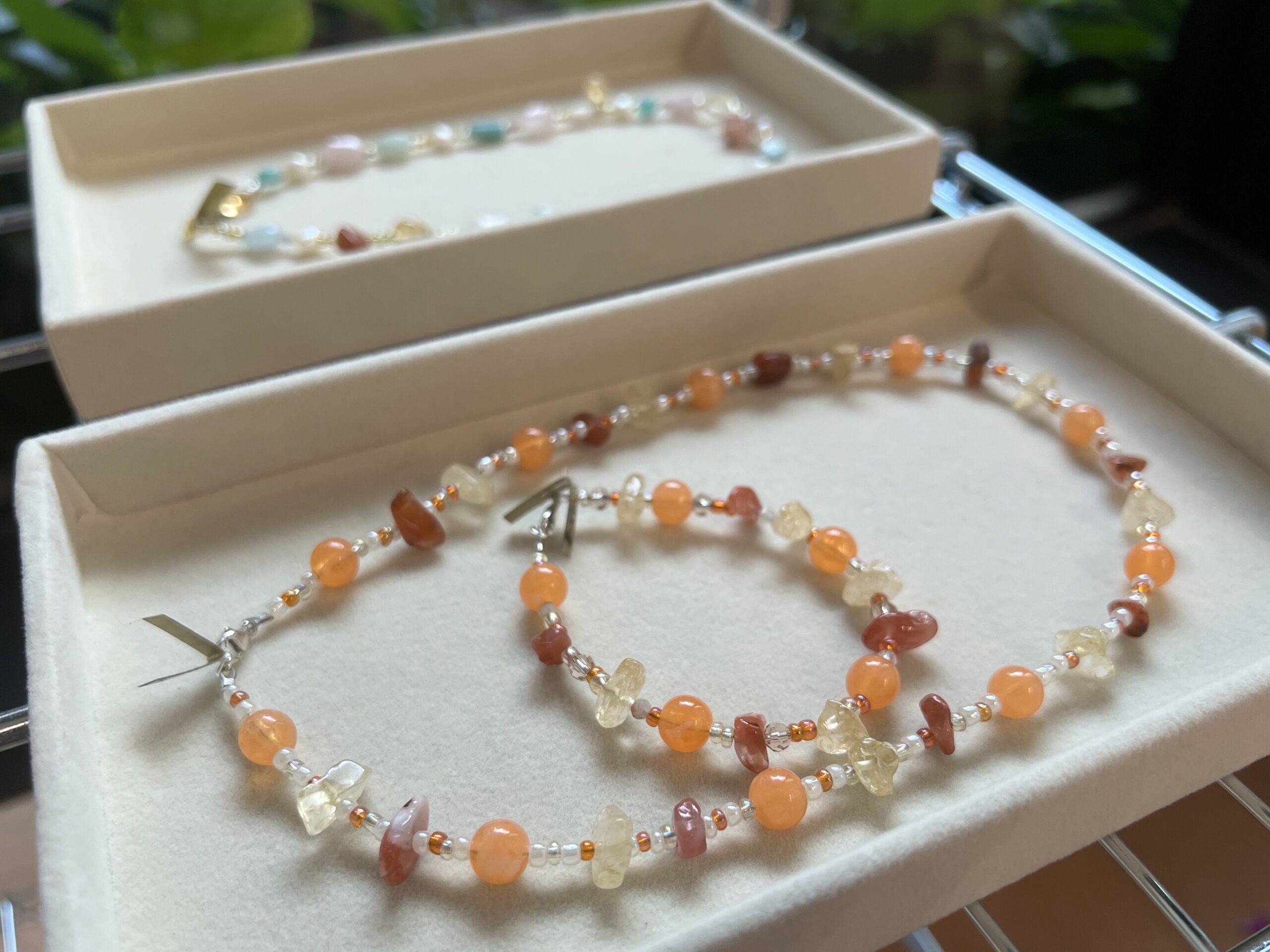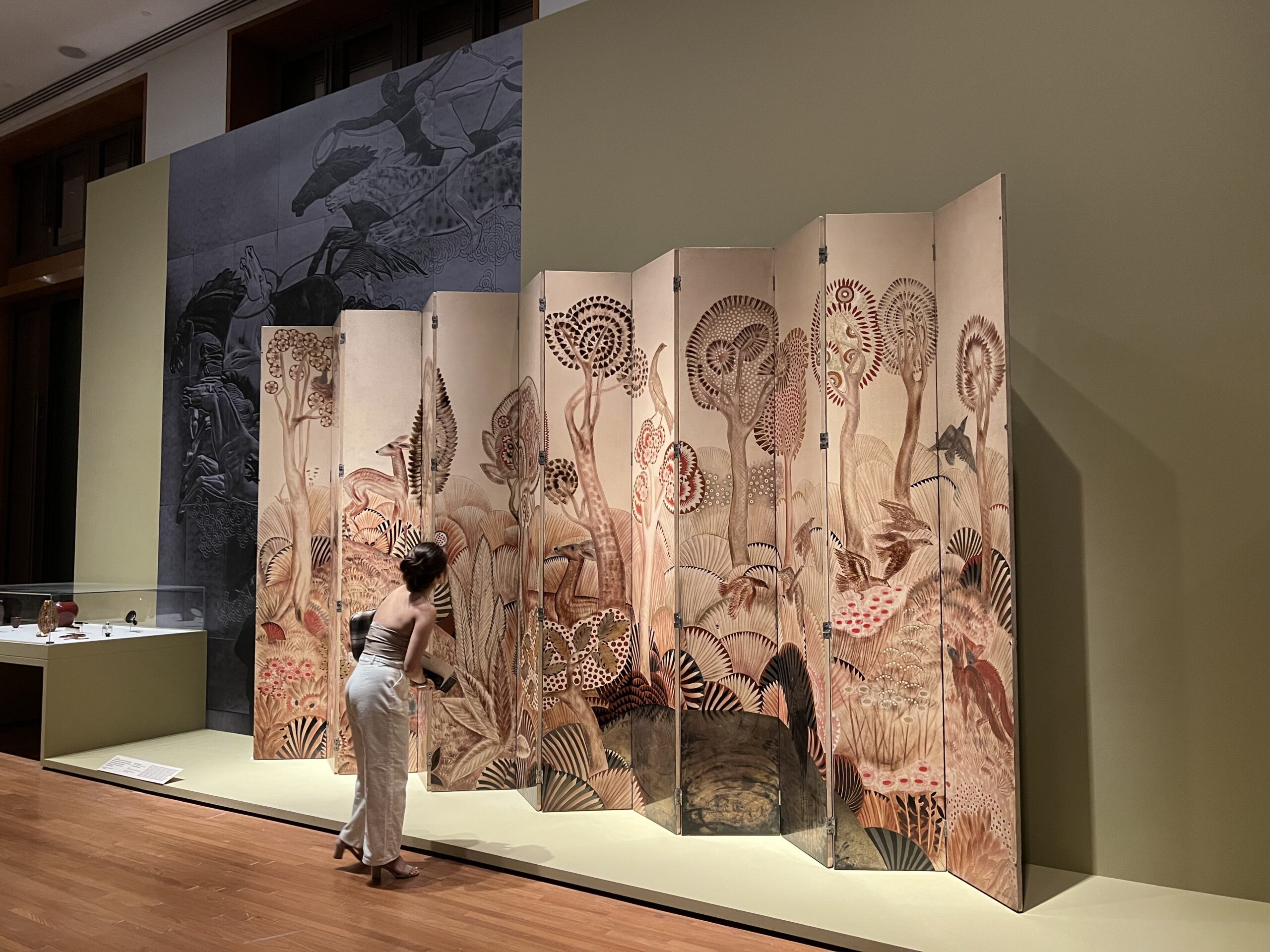Every year, time seems to whizz past real quick. This year, I thought I would have the luxury of time to wind down towards the end of the year, but it turns out that my schedule was packed despite the fact that I was given a break in December. This year I also have the opportunity to travel for work. Yes, it does feel like a holiday, but since there were some responsibilities to be executed, so it isn’t exactly gratifying. Still, it is an eye-opening and enriching experience.
We spent four days three nights in Penang. It was a cultural immersion trip to find out more about the culture and history of Penang.
It was an hour-long plane ride to Penang, Malaysia by SilkAir.
Food was served onboard, but it was just a simple chicken pie with some beverages. On our flight back, we had sandwiches. The flight from Singapore to Penang was smooth, but it wasn’t the case for the flight back to Singapore where we experienced air turbulence before landing.
We had Molly as our tour guide, and she is one of the licensed travel guides in Malaysia.
After touching down, we had lunch at originally Bangkok Tom Yam, a coffee shop that sells Thai food. The food was not too bad but somewhat spicy.
Our first stop was the batik factory where we learn how batik cloths are made. The factory was about pretty far away from Penang city centre.
The first step of batik cloth-making is to stamp patterns and designs on a piece of cotton or silk with a mixture of beeswax and resin.
Batik artisans use these handcrafted wooden stamps which have motifs of various nature-inspired patterns on it.
They would melt the beeswax and resin into this hot pot to form the batik ‘ink’.
Artisans could also try freehand on the batik using a canting filled with hot wax. It is a pen-like instrument which has a fine copper tip that allows the hot wax to flow through.
Once the designs are drawn out, coloured dyes are used to paint the motifs.
They use recycled Vitagen bottles to contain the coloured dyes. In the past, they use natural coloured dyes, but they often don’t last. Nowadays, they used chemical dyes which contains artificial chemicals that allow the dyes to last longer on the cloth.
You can request a hands-on batik painting session at the factory for a small fee. But you can only collect your batik pieces after they have soaked in fixatives and boiled in hot water to remove the hot wax. It will take about a day or two for the batik pieces to be ready.
I didn’t have a chance to do my batik handkerchiefs, but it looks rather fun!
Next, we visit a nutmeg factory which is a short drive away from the Batik factory.
We get to see the nutmeg, but we did not visit the nutmeg plantation there. Apparently, nutmeg is a local produce in Penang and over here, you can get several nutmeg products like nutmeg juice and dried nutmeg fruit. When you come to Penang, these are some of the local produce you can purchase.
Nutmeg is well-known for its medicinal properties among the Malaysians. My grandmother used to use nutmeg oil for all sorts of ailments.
This nutmeg factory is a family business which has been passed down from generation to generation. The lady boss shared with us about the benefits and uses of the nutmeg seed. It is a much sought-after spice by chefs from other parts of the world because of its unique aroma and flavour it has.
Covering the nutmeg seed is this reddish seed covering called mace. It is also used as a spice, and it has a more delicate flavour than the nutmeg seed.
We were also taught how to distinguish a male nutmeg fruit from a female one. The male nutmeg fruit has got a criss-cross line at the bottom of the fruit, and it has two nutmeg seeds embedded it. On the other hand, the female nutmeg fruit has a single line found at the bottom of the fruit and has only one seed. Only the female nutmeg seeds can grow into a nutmeg tree which bears fruits.
Once is the mace is dried, it looks like the ones shown below!
The factory also housed a small shop which sells nutmeg produce. You can sample some of their products before purchase.
We also spotted some nutmeg trees in the vicinity.
For dinner, we had a simple Chinese-style dishes with rice. I would say the food here is slightly below average as some of the dishes here were served cold.
But they’ve got a great view by the shorelines of Penang.
We stayed at Berjaya Penang Hotel which is supposedly a 4-star hotel, but it looked like a 3-star hotel to us. The rooms are clean, but the toilets need to be refurbished.
This hotel has a small gym and swimming pool, but during the trip, I did not have a chance to use the facilities. One advantage of this hotel though is its location. It is near a shopping mall, and there is a convenience store, 7-11 just right outside the hotel. Opposite the hotel is Penang Adventist hospital and many of the hotel guests here are patients of the hospital. They flew all the way to Penang to seek medical treatment from the hospitals here.
It is about 15 to 20 minutes away from the bustling city of Georgetown. This hotel also provides a shuttle bus service to take you to the city centre.
From the lobby, you can see its one of those older hotels that needs refurbishing to be on part with the newer and more modern hotels in the region.
I stayed in their twin rooms which has a mini bar, fridge, TV and a safe. All the essential hotel amenities are provided at Berjaya Penang Hotel.
Another perk of staying at this hotel is the gorgeous view.
Morning breakfast spread at the hotel was way beyond on my expectation. The international buffet spread was excellent, and they do change their dishes daily. In addition to that, they would also serve local breakfast items like roti Chennai and Nasi lemak so that hotel guests could have a taste of Penang local food.
After a hearty breakfast, we left for a school visit in the small town in Penang. It was so different from our schools in Singapore. Though the facilities were not very modern and advanced, the students display a strong spirit of learning.
There’s an exhibition room where the students displayed their art and craft items.
As we walked into their school hall, they welcomed us with a resounding applause.
The school also served us some snacks and drinks. We had this small packets of nasi lemak wrapped in banana leaf as well as sponge cakes. The Nasi Lemak rice was so fragrant and delicious!
For lunch, we headed back to the hotel for a simple buffet meal specially catered for us.
After lunch, we went on a UNESCO heritage walk in the historic city of George Town. We visited places of worship as well as to view the various mural art paintings and street art. George Town was awarded the coveted title of World Heritage Site under the category of Cultural Heritage by the UNESCO World Heritage Committee for its multicultural heritage communities and architectural treasures.
Penang has a very similar culture to Singapore because like Singapore; it is also a trading centre along the Straits of Malacca in the past. Therefore, Penang benefits a lot from the rich cultural exchanges between East and West. Penang was once a British trading post and settlement, and the city of George Town was named after Britain’s King George III. Similarly, Singapore is also British trading port which was discovered by Sir Stamford Raffles, a British! Like Singapore, George Town is a cultural melting pot that bears rich influences from both its former British ties and the influx of immigrants from around the region.
The first attraction we visited was St. George’s Church which was the oldest Anglican church in Southeast Asia. The church was closed on that afternoon, so we did not have the chance to enter.
The next pitstop was the Goddess of Mercy Temple where they allow visitors to enter. It is the oldest Chinese temple in Penang and was built in 1800.
We walked into the temple to explore some of the main temple grounds and to observe how devotees carry out their praying rituals.
Does this look familiar? We also have such trishaws in Singapore as it was a mode of transport in the olden days.
Sri Maha Mariamman temple was built in 1833, and that was many years ago! I wish we had the opportunity to enter the temple grounds, but we did not enter as it was rather warm that day and some of us couldn’t take the heat. Days before the trip, we were still contemplating if we should proceed with the Penang trip as it was severely hit by the floods. It seems like the city is back to normal a week after the floods. The news on Penang floods must have been sensationalised.
Further down the road is Kapitan Keling Mosque. This brick mosque was built in 1803 and was named after the Captain of the Indian Muslim community, Kapitan Keling Mydin Merican.
Along Armenian street, there were plenty of such steel-rod caricature structures which depicts the history of the streets and stories of its communities in a local voice.
Another popular attraction is Chew jetty which is one of the clan jetties in Penang. This traditional Chinese waterfront settlement was built on stilts over the sea. The settlement was home to the city’s early stevedores and fisherfolks.
We had an early dinner that day at a Chinese halal restaurant. The food was delicious, but we were too full from the heavy lunch.
On the third day, we took a short morning walk along the outskirts of Fort Cornwallis which is along the waterfront. It was built in 1786, and it is constructed in the shape of a star. To enter, you will need to purchase a ticket.
After the short walk along the waterfront, we proceeded to the Colonial Penang museum. This museum is worth a visit and highly recommend you to drop by this museum because it houses a lot of artefacts which were once used by the British Administrators and the wealthy merchants in Penang. The guides there were also great storytellers who can get you hook into the stories of the past.
It is also TripAdvisor’s top 10 museums in the whole of Malaysia! How could you miss this?
Colonial Penang Museum
No.7 Jalan D.S. Ramanathan (Scott Road)
Pulau Tikus
10350 Penang, Malaysia
Business hours:
9.30 am to 6.30pm daily
Email: general@colonialpenangmuseum.com
Admission fees: RM 30 (Adult), Child (RM 15)
Apparently, this is also a popular destination for newlyweds who wish to take wedding photos.
There are 22 roman pillars stood erected in the garden right in front of the Colonial house. Remember to climb up the tree house to enjoy a bird’s eye view of the museum.
One particular fact shared by the guide was this study table which has secret compartments invented by the English. Before the invention of keys, they have already come up with ways to hide their seals.
They also displayed several stained glass windows and reversed paintings by well-known European artists. Each artefact is over a hundred years old!
After lunch, we had a simple buffet affair at 1926 Heritage hotel. The exterior of the hotel looks slightly cool, but the interior looks a little run down and old.
The next must-visit attraction is Penang is the Pinang Peranakan Museum. The Peranakan culture over there in Penang is much richer than in Singapore. It’s such a beautiful heritage, and I love the Peranakan culture! The Peranakan Chinese are called Baba-Nyonya, and they are a group of early Chinese settlers who immigrated to the Northern part of Malaysia openly adopted and absorbed the local cultures. Over time, they married other ethnic groups like Malays into their families.
The Nyonya artistry is something which I truly admired for its intricacies. Most of the Peranakan objets d’art are handmade. If I were to revisit Penang, I would purchase some of these Peranakan handicrafts.
The mansion has many furnishings have elaborated designs. From the tiles to the tableware, there are flower motifs everywhere. Very pretty indeed!
Have you seen such elaborated wedding bed before?
The Peranakan customs and traditions are fascinating. On the wedding night, they would place a basket with a hen and rooster underneath the bed. The next morning, if the hen hops out of the basket first, then the first child to be born is a female. It happens to be a rooster; then the child is predicted to be a male.
The ladies are Nyonyas, and they dress exquisitely well. They would adorn the kebaya (which is an elegant dress with Malay influence) together with the beautiful bead slippers.
Check out this old dressing table with all the retro makeup items!
The home appliances and decorative items in the mansion are from the sixties. No wonder Mediacorp decided to film the Chinese TV series, ‘Little Nyonya’ in this huge Peranakan mansion.
Penang Nyonya food is also a must-try! Some delicacies include Assam Prawn and Bubur Cha Cha. The Peranakans often packed their food in Tiffin carrier which has beautiful hand-painted motifs.
On our last day, we visited a Tau Sar Peah factory and the chocolate museum to get some souvenirs. These Chinese pastries are delicious and are halal-friendly.
It was a productive four days three nights where we get to understand the cultural side of Penang. I wouldn’t mind exploring Penang again soon as I wanted to try their street food! I might want to go for a Peranakan walking trail the next time I visit Penang.

![[Review] Yānhuo restaurant 烟伙 : A new modern Chinese bistro with a vintage charm](https://deeniseglitz.com/wp-content/uploads/2025/04/IMG_7489-150x150.jpeg)













































































